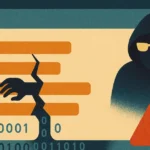The Tools You Didn’t Approve—but Are Already in Use
Shadow IT refers to any software, applications, systems, or devices used within an organization without the explicit approval or oversight of the IT or security departments. These tools are often introduced by employees who are simply trying to get their jobs done faster—signing up for a project management app, a file-sharing service, or even AI tools that help automate routine tasks.
The problem? These tools fly under the radar of IT governance, bypass corporate security policies, and introduce blind spots into an organization’s attack surface. Shadow IT creates hidden vulnerabilities that can lead to data breaches, compliance violations, and operational chaos if left unmanaged.
While the intention behind Shadow IT is rarely malicious, the consequences can be severe.
Why Shadow IT Happens
Shadow IT thrives in environments where employees feel traditional tools are too slow, clunky, or restrictive. With SaaS apps just a few clicks away, anyone with a corporate email address can spin up a new tool or integration without waiting for IT approval.
Other drivers of Shadow IT include:
- Distributed and remote workforces using personal devices and unsanctioned tools
- Teams experimenting with new SaaS tools during pilots or projects
- Lack of visibility or control over cloud-based services
- Third-party vendors or contractors bringing in their own systems
What starts as a productivity shortcut often leads to security and compliance blind spots—especially when sensitive data is stored, shared, or accessed through unmonitored channels.
Risks Associated with Shadow IT
Shadow IT dramatically expands an organization’s risk profile because these unsanctioned apps:
- Lack centralized security controls like SSO, MFA, and encryption
- Bypass identity governance and offboarding workflows
- Create unmonitored data repositories that could be exposed or misused
- Introduce compliance issues, especially when sensitive or regulated data is involved
- Weaken incident response, since security teams don’t know where critical data lives or how it’s being accessed
The most dangerous part? You can’t secure what you can’t see.
How to Detect and Manage Shadow IT
Traditional CASBs (Cloud Access Security Brokers) were the first tools built to detect Shadow IT by monitoring network traffic and cloud usage. But with encrypted traffic, remote work, and direct-to-cloud access becoming the norm, these tools alone are no longer enough.
Modern approaches to managing Shadow IT include:
- Identity-based discovery – Monitoring login activity across browsers and devices to see which SaaS apps users are accessing
- Email API integrations – Detecting account creation and third-party connections through email telemetry
- Continuous app inventory – Maintaining a real-time, living inventory of all applications in use, whether approved or not
- Security enforcement – Applying policies like MFA, SSO enrollment, or access revocation automatically—even to apps IT didn’t know existed
By combining visibility with automated governance, organizations can take back control of their SaaS environments without slowing down productivity.
FAQ: Shadow IT
Is Shadow IT always a security threat?
Not inherently. Many employees use Shadow IT tools to boost productivity. But without oversight, even legitimate tools can introduce serious risks if they’re misconfigured, overprivileged, or contain sensitive data.
What’s the difference between Shadow IT and sanctioned IT?
Sanctioned IT refers to software and tools that have been vetted, approved, and managed by the IT or security team. Shadow IT operates outside of this framework, often without awareness or controls.
How can I find Shadow IT in my organization?
Look for tools that provide app discovery based on user activity—not just network traffic. Browser extensions, email monitoring, and identity-first security platforms can surface usage patterns and unknown tools.
Does Shadow IT include personal devices or BYOD?
Yes. If employees use personal laptops or phones to access corporate data or install apps outside of IT control, it can contribute to Shadow IT risk.
Can Shadow IT be eliminated completely?
Probably not. But it can be managed. The goal isn’t to block every unsanctioned app—it’s to gain visibility, assess risk, and apply guardrails that protect the business without hampering innovation.


